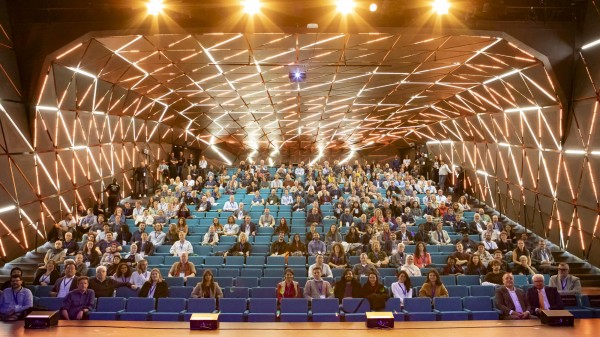The original anchor of the first Belgica serves as a silent witness to the legendary Belgica expedition of 1897-1899. After a tumultuous history, the ship was scuttled in a Norwegian fjord during the Second World War. Half a century later, local divers recovered the anchor and handed it over to the Belgica Society, which in 2024 donated it to the Flanders Marine Institute (VLIZ). On 19 March 2025, the anchor was given a prominent and honourable place on Oostende’s Oosteroever, in the presence of Governor Carl Decaluwé.
The Belgica anchor is given a place of honour at the Marine Station Ostend. (VLIZ)
Between 1897 and 1899, the Belgica embarked on Belgium’s first Antarctic exploration, led by Adrien de Gerlache. This pioneering expedition was groundbreaking: never before had scientists overwintered in the Antarctic under such life-threatening conditions. The crew, including a young Roald Amundsen, persevered by gathering data on geography, fauna, flora, and meteorology – laying a solid foundation for future scientific research. Over the years, numerous books and articles have been written about the exploits of the Belgica expedition. However, what happened to the wooden sailing ship after its return from Antarctica is less well known.
Its history is eventful, to say the least. Let’s go back to 1884, when the Belgica, originally named Patria, was built in Svelvik, near Oslo. The 36-metre-long wooden three-master – exactly the same length as VLIZ’s research vessel Simon Stevin – was constructed as a whaling ship by Johan Jakobsen. Jakobsen was no novice; he later built the Endurance, which Shackleton used in his unsuccessful attempt to cross Antarctica between 1914 and 1917.
In 1896, Patria was sold to Adrien de Gerlache and renamed Belgica, with which he made history. After its return, the vessel continued to serve as a whaling and Arctic research ship under the same name. In 1916, the Belgica was sold, renamed Isfjord, and used for coal transport between Svalbard and Norway. Two years later, it was repurposed as a floating fish processing and cod liver oil production platform. By the late 1930s, no longer seaworthy, it became a coal storage facility. Then came World War II. Laden with British munitions, the ship fell victim to a German air raid in May 1940 and sank. It wasn’t until 1990 that divers from a local club rediscovered the Belgica wreck in a bay near Harstad, Norway, lying 22 metres deep and about 200 metres offshore.

The Belgica at departure from Antwerp in 1897 (Foto: Jan Van de Vyver - https://felixarchief.antwerpen.be)
The shipwreck is protected and, given its condition, cannot be salvaged. However, some artefacts found a new home. The ship’s owner, Kristian Holst, donated one of the two original anchors to the Arctic Museum in Tromsø, where it still stands at the entrance. The second anchor was gifted to the Belgica Society following a visit to Norway. This society aimed to promote knowledge of Belgium’s maritime heritage. Among its founding members were fishery entrepreneur Willy Versluys, Jean-Louis de Gerlache (grandson of Adrien de Gerlache), maritime archaeologists Marnix Pieters, Tom Lenaerts, and Tomas Termote, and VLIZ General Director Jan Mees. When the society ceased its activities, this second anchor was donated to VLIZ by Willy Versluys, the driving force behind the Belgica Society and a former VLIZ board member.
Today, this anchor stands as a powerful symbol of the Belgica's rich history, its role in polar sciences, and the courage and determination of its crew. For this reason, VLIZ has now given it a prominent and visible place. Just a stone’s throw from the sea, at the top of the slipway of a historic shipyard, and in close proximity to the Marine Station Oostende, where VLIZ continues to shape the future of international marine research.
The official handover of the Belgica anchor took place in the presence of Governor Carl Decaluwé, Chairman of VLIZ and official ‘Receiver of Wrecks’, shipowner Willy Versluys, and VLIZ General Director Jan Mees.


